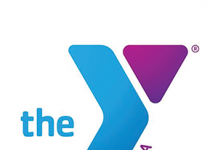
In an age where social movements are preceded by hashtags, “slacktivism” has become a term so ubiquitous that for many, it raises the question: What does slacktivism even mean? It’s retweeting the latest political article with the hashtag #resistance. It’s adding a rainbow filter to your Facebook picture. And, most significantly, it’s thinking those displays of support are where online activism ends.
You’ll usually hear “slacktivist” used as a pejorative to criticize someone who uses social media posts as a substitute for what would traditionally be considered meaningful involvement in an issue. Those detractors may, however, be overlooking the full range of activism, suggests Austin McCoy, a professor and historian in Alabama who focuses on social movements. McCoy says the cynical term assumes that people who choose to speak up about particular issues online, are not also volunteering, donating, or marching.
McCoy spent nine years at the University of Michigan completing a doctorate and postdoc while working on activism related to national and campus issues. He uses online platforms as organizing tools and found that even Facebook comments, notoriously an unproductive space for dialogue, could spur real-life action. In 2016, when racist literature started appearing on campus, he posted about the problem, sparking a discussion. Enough people “liked” the post that he organized a meeting. Sixty people showed up to plan a response to the incidents, and they founded the Collective Against White Supremacy, which is still operating in Ann Arbor.
A recent Pew Research Center survey found that most Americans think social media is important for initiating sustained social movements. While a majority believe social media can distract from more important issues, they also acknowledge that social media platforms give a voice to underrepresented groups.
McCoy agrees. “There are some people who aren’t able to do day-to-day organizing or participate in marches on the street,” he says. Social media posts allow those individuals to raise awareness and media attention for under-the-radar issues, helping rally support and sustained activism.
Across the state, the Michigan Citizens for Water Conservation has seen how slacktivism can be harnessed into powerful support. The group has been organizing to protect water resources since 2000, and are supporting Osceola Township’s fight to block Nestlé Waters North America from building a pumping station to transfer more water to its bottling plant. A year ago, the international nonprofit SumOfUs reached out to MCWC to help. Through their network of supporters, they raised more than $50,000 for Osceola’s legal fees.
Interim board vice president Wendy Nystrom says the support made a real difference for “the little guys” going up against a major corporation. Social media has been critical for their organization, in disseminating information, soliciting donations, and forming coalitions with other groups. But it’s only one piece of the puzzle, Nystrom says. “You have to remember, social media is a tool. It’s the people that are most important.”
|
|
|









